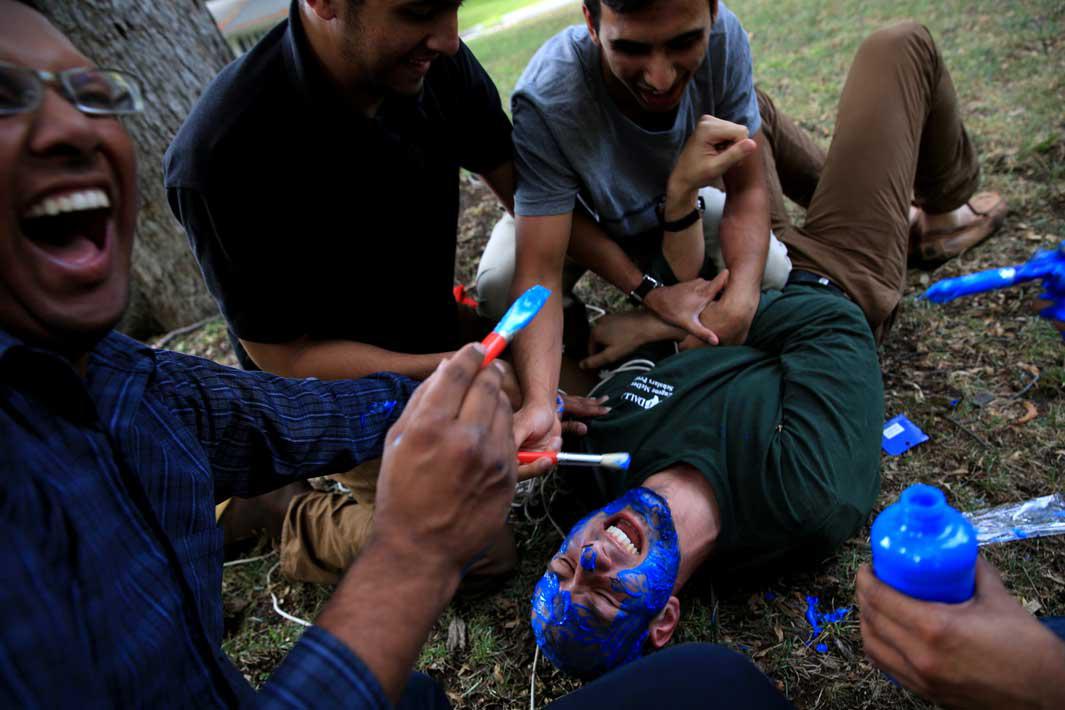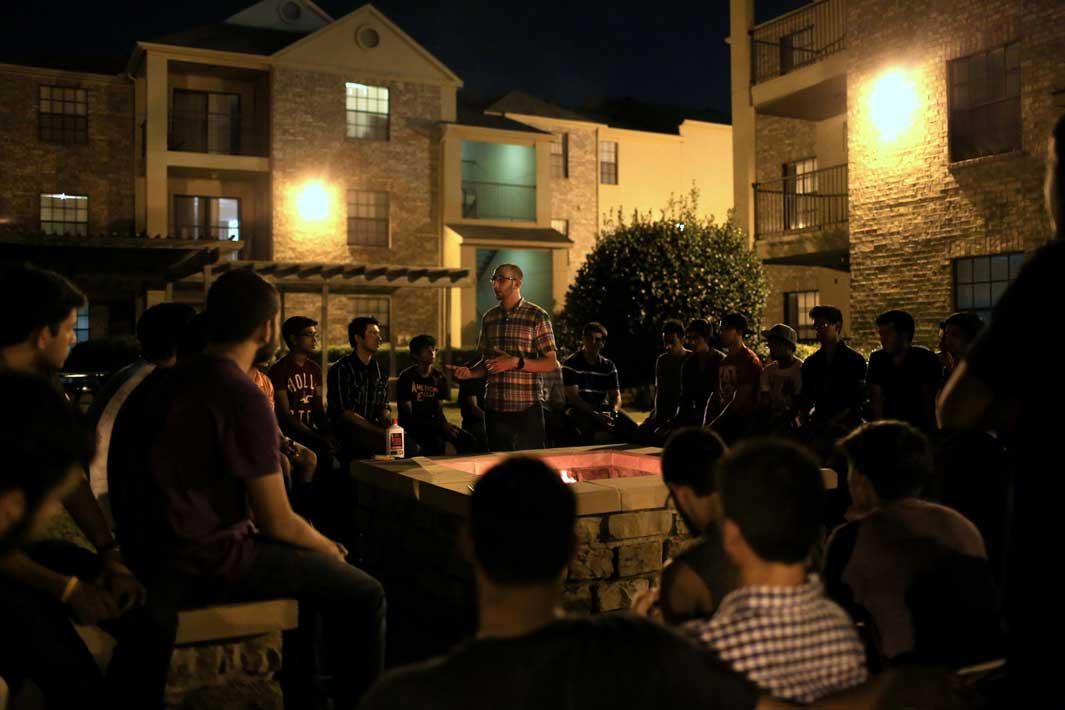When Texan photographer Dylan Hollingsworth started sharing his photos from a trip to Palestine this summer, he was disheartened by some of the confused and resentful reactions he received from friends of various religious backgrounds. “I also think I may have lost a few rural Texas Facebook friends that just weren’t real comfortable with seeing images portraying in a positive light a people that post-9/11 America has taught them to fear. All this got me thinking more and more about current states of inequality and subtle oppression and what that looks like for Muslims in this country,” Hollingsworth wrote.
Hollingsworth wanted to find a way to tell a different story about Muslims in America. That’s when he came across the University of Texas at Dallas’ Alif Laam Meem (ALM), which was just beginning to make headlines as the country’s first Muslim fraternity. After contacting the organization in September, ALM’s council voted to allow Hollingsworth to shadow them. Since then, Hollingsworth has been spending two or three days a week with the fraternity, photographing during weekly meetings, group outings, and prayer. He’s also working on a documentary about the group. “For me as an outsider, just getting to go into a mosque with a group of guys and being trusted to be a part of these sacred moments—that’s a huge honor for me,” Hollingsworth said in a phone interview.


Dylan Hollingsworth

Dylan Hollingsworth
There are many student organizations around the country designed for Muslims, but Alif Laam Meem is the first to adopt some of the structures of the Greek system. As a religious organization, ALM shirks some of the social practices many fraternities have a reputation for, like drinking, and instead focuses on spending time on volunteer work. Though, like its peers, ALM serves primarily to build community. “Any time you’re on a college campus, you want someone to invite you to their table. Instantly now they’ve got a crew to be a part of, and I think that’s been beneficial. I’m eager to see in a few years as these guys graduate what being part of that fraternity will have done for them,” Hollingsworth said.
Although the members of Alif Laam Meem share a religious affiliation, Hollingsworth said their backgrounds, including their degree of religious observance and their parents’ nationalities, differ. Many of the fraternity’s members, however, face a similar challenge: “They’re having to find this middle ground in between their parents’ way and what will be their way. They’re searching for this new identity,” Hollingsworth said.
Hollingsworth said he’s happy to leverage ALM’s novelty to explore American Muslim identity and he hopes that some day organizations like ALM will be more commonplace. “Today, we don’t even notice when a black baseball player walks on the field, but when Jackie Robinson did, it that was huge,” Hollingsworth said. “One day, when a Muslim fraternity opens, I hope people won’t bat an eyelash. In the meantime, I think telling these stories is humanizing, and I hope it helps people learn how to live shoulder to shoulder.”

Dylan Hollingsworth



Dylan Hollingsworth

